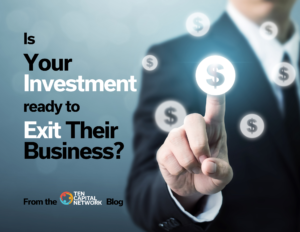
How to Achieve an Exit
2min read As a startup investor, it is imperative that you are considering the exit strategy before beginning the investment as this is what determines

2min read As a startup investor, it is imperative that you are considering the exit strategy before beginning the investment as this is what determines

2 min read As an investor, you receive your most significant return on investment when your startup investment takes its exit. But, is your startup

2 min read: We know that investors are looking for traction, but how to show traction when you are pre-revenue? Contrary to popular belief, even if

2 min read At TEN Capital, we see several startups that are strong candidates for early exits. In looking at the history of angel groups

2 min read After investing in startups for twenty years and talking with thousands of angel, venture capital, and other startup investors, I’ve seen the